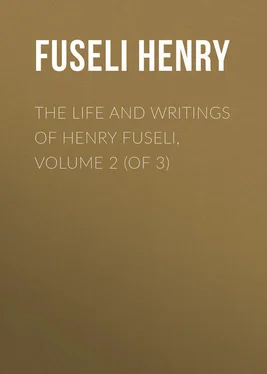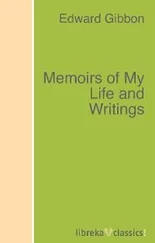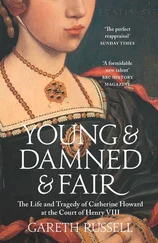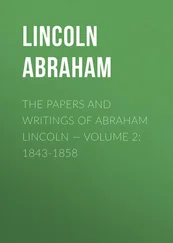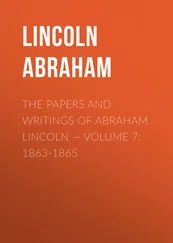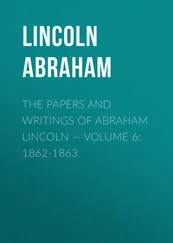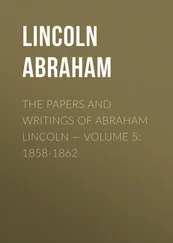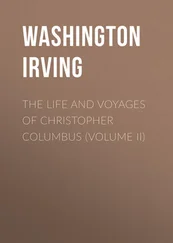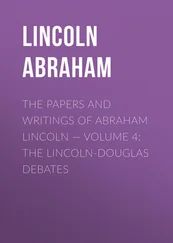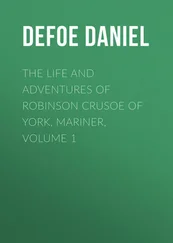Henry Fuseli - The Life and Writings of Henry Fuseli, Volume 2 (of 3)
Здесь есть возможность читать онлайн «Henry Fuseli - The Life and Writings of Henry Fuseli, Volume 2 (of 3)» — ознакомительный отрывок электронной книги совершенно бесплатно, а после прочтения отрывка купить полную версию. В некоторых случаях можно слушать аудио, скачать через торрент в формате fb2 и присутствует краткое содержание. Жанр: visual_arts, foreign_antique, foreign_prose, на английском языке. Описание произведения, (предисловие) а так же отзывы посетителей доступны на портале библиотеки ЛибКат.
- Название:The Life and Writings of Henry Fuseli, Volume 2 (of 3)
- Автор:
- Жанр:
- Год:неизвестен
- ISBN:нет данных
- Рейтинг книги:5 / 5. Голосов: 1
-
Избранное:Добавить в избранное
- Отзывы:
-
Ваша оценка:
- 100
- 1
- 2
- 3
- 4
- 5
The Life and Writings of Henry Fuseli, Volume 2 (of 3): краткое содержание, описание и аннотация
Предлагаем к чтению аннотацию, описание, краткое содержание или предисловие (зависит от того, что написал сам автор книги «The Life and Writings of Henry Fuseli, Volume 2 (of 3)»). Если вы не нашли необходимую информацию о книге — напишите в комментариях, мы постараемся отыскать её.
The Life and Writings of Henry Fuseli, Volume 2 (of 3) — читать онлайн ознакомительный отрывок
Ниже представлен текст книги, разбитый по страницам. Система сохранения места последней прочитанной страницы, позволяет с удобством читать онлайн бесплатно книгу «The Life and Writings of Henry Fuseli, Volume 2 (of 3)», без необходимости каждый раз заново искать на чём Вы остановились. Поставьте закладку, и сможете в любой момент перейти на страницу, на которой закончили чтение.
Интервал:
Закладка:
From these observations on the collateral and unsolicited beauties which must branch out from the primary expression of every great idea, it will not, I hope, be suspected, that I mean to invalidate the necessity of its unity, or to be the advocate of pedantic subdivision. All such division diminishes, all such mixtures impair the simplicity and clearness of expression: in the group of the Laocoon, the frigid ecstasies of German criticism have discovered pity like a vapour swimming on the father's eyes; he is seen to suppress in the groan for his children the shriek for himself, – his nostrils are drawn upward to express indignation at unworthy sufferings, whilst he is said at the same time to implore celestial help. To these are added the winged effects of the serpent-poison, the writhings of the body, the spasms of the extremities: to the miraculous organization of such expression, Agesander, the sculptor of the Laocoon, was too wise to lay claim. His figure is a class, it characterizes every beauty of virility verging on age; the prince, the priest, the father are visible, but, absorbed in the man, serve only to dignify the victim of one great expression; though poised by the artist, for us to apply the compass to the face of the Laocoon, is to measure the wave fluctuating in the storm: this tempestuous front, this contracted nose, the immersion of these eyes, and above all, that long-drawn mouth, are separate and united, seats of convulsion, features of nature struggling within the jaws of death.
SECOND LECTURE
ART OF THE MODERNS
ὉΙΤΙΝΕΣ ἩΓΕΜΟΝΕΣ ΚΑΙ ΚΟΙΡΑΝΟΙ ΗΣΑΝ.
ΠΛΗΘΥΝ Δ' ΟΥΚ ΑΝ ΕΓΩ ΜΥΘΗΣΟΜΑΙ ΟΥΔ' ΟΝΟΜΗΝΩ
ΟΥΔ' ΕΙ ΜΟΙ ΔΕΚΑ ΜΕΝ ΓΛΩΣΣΑΙ, ΔΕΚΑ ΔΕ ΣΤΟΜΑΤ' ΕΙΕΝ,
ΦΩΝΗ Δ' ΑΡΡΗΚΤΟΣ.
Homer. Iliad. B. 487.Introduction – different direction of the art. Preparative style – Masaccio – Lionardo da Vinci. Style of establishment – Michael Angelo, Raphael, Titiano, Correggio. Style of refinement, and depravation. Schools – of Tuscany, Rome, Venice, Lombardy. The Eclectic school – Machinists. The German school – Albert Durer. The Flemish school – Rubens. The Dutch school – Rembrant. Observations on art in Switzerland. The French school.
In the preceding discourse I have endeavoured to impress you with the general features of ancient art in its different periods of preparation, establishment and refinement. We are now arrived at the epoch of its restoration in the fifteenth century of our æra, when religion and wealth rousing emulation, reproduced its powers, but gave to their exertion a very different direction. The reigning church found itself indeed under the necessity of giving more splendour to the temples and mansions destined to receive its votaries, of subduing their senses with the charm of appropriate images and the exhibition of events and actions, which might stimulate their zeal and inflame their hearts: but the sacred mysteries of Divine Being, the method adopted by Revelation, the duties its doctrine imposed, the virtues it demanded from its followers, faith, resignation, humility, sufferings, substituted a medium of art as much inferior to the resources of Paganism in a physical sense as incomparably superior in a spiritual one. Those public customs, that perhaps as much tended to spread the infections of vice as they facilitated the means of art, were no more; the heroism of the Christian and his beauty were internal, and powerful or exquisite forms allied him no longer exclusively to his God. The chief repertory of the artist, the sacred records, furnished indeed a sublime cosmogony, scenes of patriarchal simplicity and a poetic race, which left nothing to regret in the loss of heathen mythology; but the stem of the nation whose history is its exclusive theme, if it abounded in characters and powers fit for the exhibition of passions, did not teem with forms sufficiently exalted to inform the artist and elevate the art. Ingredients of a baser cast mingled their alloy with the materials of grandeur and of beauty. Monastic legend and the rubric of martyrology claimed more than a legitimate share from the labours of the pencil and the chisel, made nudity the exclusive property of emaciated hermits or decrepit age, and if the breast of manhood was allowed to bare its vigour, or beauty to expand her bosom, the antidotes of terror and of horror were ready at their side to check the apprehended infection of their charms. When we add to this the heterogeneous stock on which the reviving system of arts was grafted, a race indeed inhabiting a genial climate, but itself the fæces of barbarity, the remnants of Gothic adventurers, humanised only by the cross, mouldering amid the ruins of the temples they had demolished, the battered fragments of the images their rage had crushed, – when we add this, I say, we shall less wonder at the languor of modern art in its rise and progress, than be astonished at the vigour by which it adapted and raised materials partly so unfit and defective, partly so contaminated, to the magnificent system which we are to contemplate.
Sculpture had already produced respectable specimens of its reviving powers in the basso-relievos of Lorenzo Ghiberti, some works of Donato, and the Christ of Philippo Brunelleschi, 27 27 See the account of this in Vasari; vita di P. Brunelleschi, tom. ii. 114. It is of wood, and still exists in the chapel of the family Gondi, in the church of S. Maria Novella. I know that near a century before Donato, Giotto is said to have worked in marble two basso-relievoes on the campanile of the cathedral of Florence; they probably excel the style of his pictures as much as the bronze works executed by Andrea Pisani, from his designs, at the door of the Battisterio.
when the first symptoms of imitation appeared in the frescoes of Tommaso da St. Giovanni, commonly called Masaccio, from the total neglect of his appearance and person. 28 28 Masaccio da S. Giovanni di Valdarno born in 1402, is said to have died in 1443. He was the pupil of Masolino da Panicale.
Masaccio first conceived that parts are to constitute a whole; that composition ought to have a centre; expression, truth; and execution, unity: his line deserves attention, though his subjects led him not to investigation of form, and the shortness of his life forbade his extending those elements which Raphael, nearly a century afterward, carried to perfection – it is sufficiently glorious for him to have been more than once copied by that great master of expression, and in some degree to have been the herald of his style: Masaccio lives more in the figure of Paul preaching on the areopágus, of the celebrated cartoon in our possession, and in the borrowed figure of Adam expelled from paradise in the loggia of the Vatican, than in his own mutilated or retouched remains.
The essays of Masaccio in imitation and expression, Andrea Mantegna 29 29 Andrea Mantegna died at Mantoua, 1505. A monument erected to his memory in 1517, by his sons, gave rise to the mistake of dating his death from that period.
attempted to unite with form; led by the contemplation of the antique, fragments of which he ambitiously scattered over his works: though a Lombard, and born prior to the discovery of the best ancient statues, he seems to have been acquainted with a variety of characters, from forms that remind us of the Apollo, Mercury or Meleager, down to the fauns and satyrs: but his taste was too crude, his fancy too grotesque, and his comprehension too weak to advert from the parts that remained to the whole that inspired them: hence in his figures of dignity or beauty we see not only the meagre forms of common models, but even their defects tacked to ideal Torsos; and his fauns and satyrs, instead of native luxuriance of growth and the sportive appendages of mixed being, are decorated with heraldic excrescences and arabesque absurdity. His triumphs are known to you all; they are a copious inventory of classic lumber, swept together with more industry than taste, but full of valuable materials. Of expression he was not ignorant: his burial of Christ furnished Raphael with the composition, and some of the features and attitudes in his picture on the same subject in the palace of the Borgheses, – the figure of St. John, however, left out by Raphael, proves that Mantegna sometimes mistook grimace for the highest degree of grief. His oil-pictures exhibit little more than the elaborate anguish of missal-painting; his frescoes, destroyed at the construction of the Clementine museum, had freshness, freedom, and imitation.
Интервал:
Закладка:
Похожие книги на «The Life and Writings of Henry Fuseli, Volume 2 (of 3)»
Представляем Вашему вниманию похожие книги на «The Life and Writings of Henry Fuseli, Volume 2 (of 3)» списком для выбора. Мы отобрали схожую по названию и смыслу литературу в надежде предоставить читателям больше вариантов отыскать новые, интересные, ещё непрочитанные произведения.
Обсуждение, отзывы о книге «The Life and Writings of Henry Fuseli, Volume 2 (of 3)» и просто собственные мнения читателей. Оставьте ваши комментарии, напишите, что Вы думаете о произведении, его смысле или главных героях. Укажите что конкретно понравилось, а что нет, и почему Вы так считаете.
